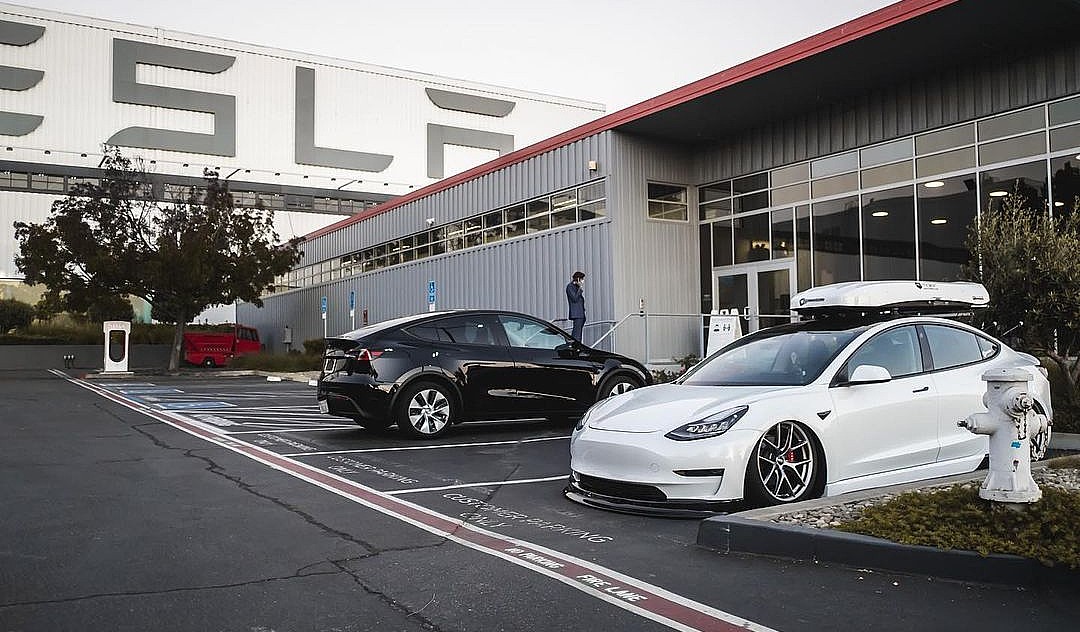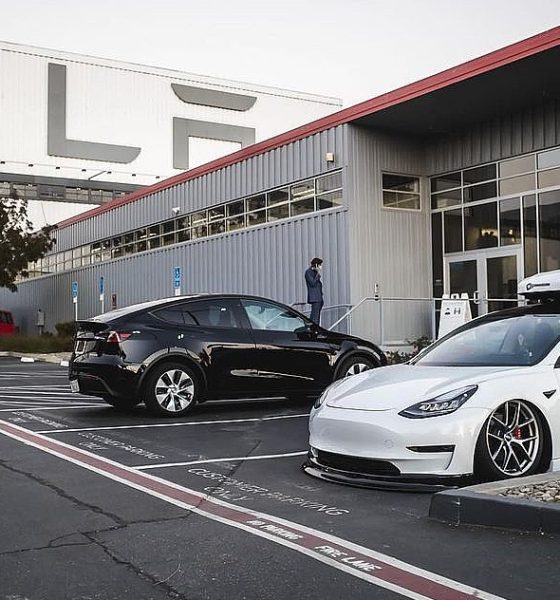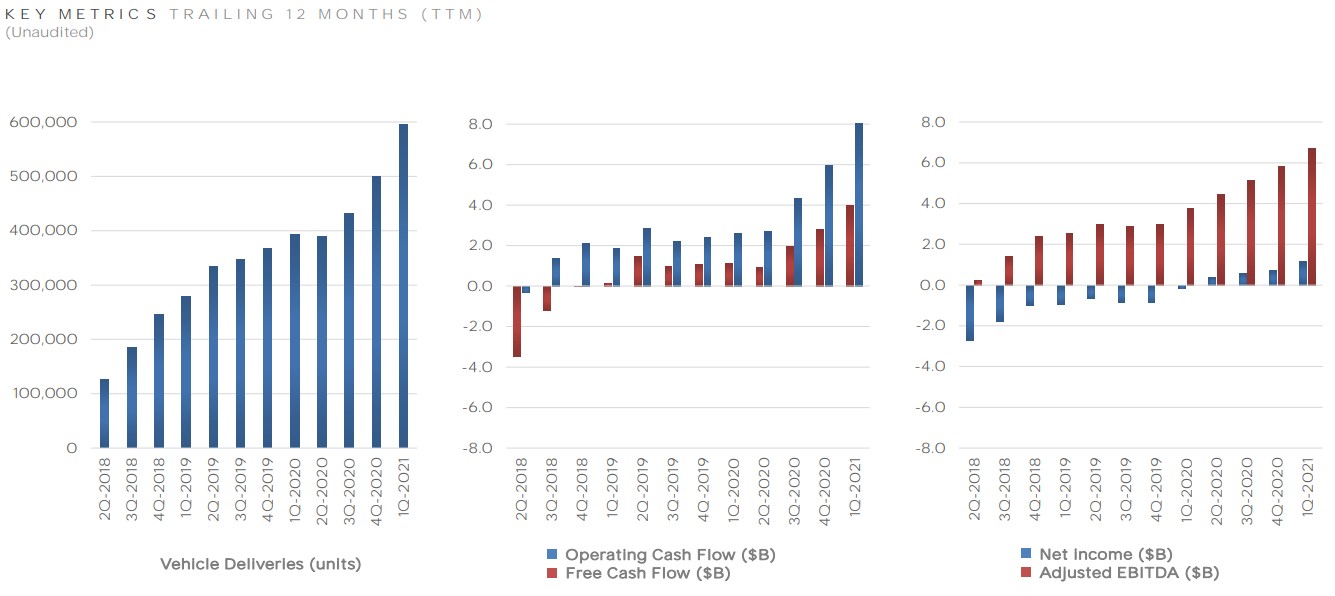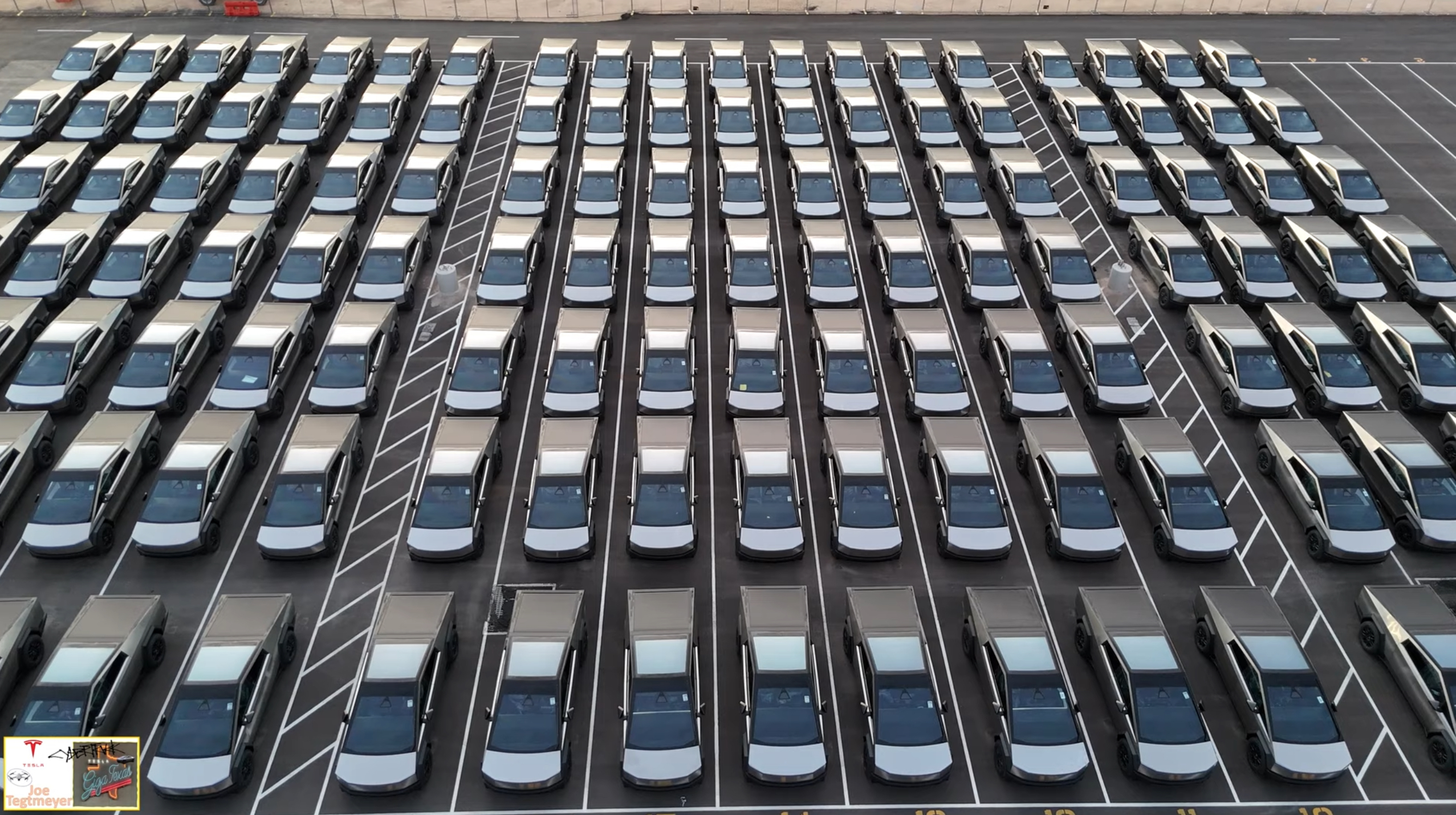

Investor's Corner
Tesla (TSLA) Q1 2021 earnings results: $10.39B in revenue, beats with $0.93 EPS
Tesla’s (NASDAQ:TSLA) first-quarter for 2021 saw the electric car maker post $10.389 billion in revenue. The results, which were discussed in an Update Letter, were released after the closing bell on Monday, April 26, 2021.
Tesla’s first quarter was impressive, with the electric car maker producing a total of 180,338 vehicles, an astounding number considering that Q1 is typically a soft quarter for car sales. The company also delivered 184,800 vehicles comprised of 182,780 Model 3 and Model Y, as well as 2,020 Model S and Model X.

Tesla’s strong Q1 results were due in part to the accelerating Model Y ramp in the United States and the production push for the Model 3 and Model Y in Gigafactory Shanghai. This allowed the company to achieve impressive figures despite the halt in the production of the refresh Model S and Model X.
The following are the key points in Tesla’s Q1 2021 Update Letter.
REVENUE
Tesla effectively beat expectations for revenue in the first quarter, reporting a revenue of $10.389 billion for the first quarter, representing year-over-year growth of 74%. In comparison, Wall Street expected Tesla’s Q1 2021 revenue to be at $10.29 billion.
EARNINGS
Tesla also beat expectations for earnings, with the company posting non-GAAP earnings per share of $0.93 in the first quarter. Wall Street, on the other hand, expected Tesla to report a gain of $0.79 per share. This represented year-over-year growth of 304%. Tesla’s GAAP earnings per share stood at $0.39 per share in the first quarter, corresponding to YoY growth of 1850%.
PROFITABILITY
Tesla’s GAAP net income reached $438M, and our non-GAAP net income surpassed $1B for the first time in the company’s history.
CASH
Net cash outflow was listed at $1.2 billion thanks to the company’s Bitcoin acquisition, while debt and finance lease reduction stands at $1.2 billion. Overall, Tesla’s cash decreased $2.2 billion, resulting in the company having $17.1 billion in total in the first quarter.
TESLA ENERGY
Tesla Energy saw some momentum in the first quarter of 2021. Tesla Solar deployments were listed at 92 MW in Q1, which is notably higher than the company’s deployments in Q1 2020, which stood at 35 MW. Battery deployments also saw a notable rise YoY, with Q1 2021 having 445 MWh and Q1 2020 having 260 MWh. Solar Roof deployments grew 9x compared to the same period last year
Other Notable Highlights
- Model 3 was the best-selling premium sedan in the world, electric or otherwise
- Production ramp of Model Y in Shanghai progressing well
- Record vehicle production and deliveries in Q1
- Massive progress in Gigafactory Berlin and Giga Texas
Tesla’s Q1 2021 Update Letter could be accessed below.
TSLA-Q1-2021-Update by Simon Alvarez on Scribd
Don’t hesitate to contact us for news tips. Just send a message to tips@teslarati.com to give us a heads up.

Investor's Corner
Tesla gets bold Robotaxi prediction from Wall Street firm
Last week, Andrew Percoco took over Tesla analysis for Morgan Stanley from Adam Jonas, who covered the stock for years. Percoco seems to be less optimistic and bullish on Tesla shares, while still being fair and balanced in his analysis.

Tesla (NASDAQ: TSLA) received a bold Robotaxi prediction from Morgan Stanley, which anticipates a dramatic increase in the size of the company’s autonomous ride-hailing suite in the coming years.
Last week, Andrew Percoco took over Tesla analysis for Morgan Stanley from Adam Jonas, who covered the stock for years. Percoco seems to be less optimistic and bullish on Tesla shares, while still being fair and balanced in his analysis.
Percoco dug into the Robotaxi fleet and its expansion in the coming years in his latest note, released on Tuesday. The firm expects Tesla to increase the Robotaxi fleet size to 1,000 vehicles in 2026. However, that’s small-scale compared to what they expect from Tesla in a decade.
Tesla expands Robotaxi app access once again, this time on a global scale
By 2035, Morgan Stanley believes there will be one million Robotaxis on the road across multiple cities, a major jump and a considerable fleet size. We assume this means the fleet of vehicles Tesla will operate internally, and not including passenger-owned vehicles that could be added through software updates.
He also listed three specific catalysts that investors should pay attention to, as these will represent the company being on track to achieve its Robotaxi dreams:
- Opening Robotaxi to the public without a Safety Monitor. Timing is unclear, but it appears that Tesla is getting closer by the day.
- Improvement in safety metrics without the Safety Monitor. Tesla’s ability to improve its safety metrics as it scales miles driven without the Safety Monitor is imperative as it looks to scale in new states and cities in 2026.
- Cybercab start of production, targeted for April 2026. Tesla’s Cybercab is a purpose-built vehicle (no steering wheel or pedals, only two seats) that is expected to be produced through its state-of-the-art unboxed manufacturing process, offering further cost reductions and thus accelerating adoption over time.
Robotaxi stands to be one of Tesla’s most significant revenue contributors, especially as the company plans to continue expanding its ride-hailing service across the world in the coming years.
Its current deployment strategy is controlled and conservative to avoid any drastic and potentially program-ruining incidents.
So far, the program, which is active in Austin and the California Bay Area, has been widely successful.
Investor's Corner
Tesla analyst realizes one big thing about the stock: deliveries are losing importance

Tesla analyst Dan Levy of Barclays realized one big thing about the stock moving into 2026: vehicle deliveries are losing importance.
As a new era of Tesla seems to be on the horizon, the concern about vehicle deliveries and annual growth seems to be fading, at least according to many investors.
Even CEO Elon Musk has implied at times that the automotive side, as a whole, will only make up a small percentage of Tesla’s total valuation, as Optimus and AI begin to shine with importance.
He said in April:
“The future of the company is fundamentally based on large-scale autonomous cars and large-scale and large volume, vast numbers of autonomous humanoid robots.”
Almost all of Tesla’s value long-term will be from AI & robots, both vehicle & humanoid
— Elon Musk (@elonmusk) September 11, 2023
Levy wrote in a note to investors that Tesla’s Q4 delivery figures “likely won’t matter for the stock.” Barclays said in the note that it expects deliveries to be “soft” for the quarter.
In years past, Tesla analysts, investors, and fans were focused on automotive growth.
Cars were truly the biggest thing the stock had to offer: Tesla was a growing automotive company with a lot of prowess in AI and software, but deliveries held the most impact, along with vehicle pricing. These types of things had huge impacts on the stock years ago.
In fact, several large swings occurred because of Tesla either beating or missing delivery estimates:
- January 3, 2022: +13.53%, record deliveries at the time
- January 3, 2023: -12.24%, missed deliveries
- July 2, 2024: +10.20%, beat delivery expectations
- October 3, 2022: -8.61%, sharp miss due to Shanghai factory shutdown
- July 2, 2020: +7.95%, topped low COVID-era expectations with sizeable beat on deliveries
It has become more apparent over the past few quarters that delivery estimates have significantly less focus from investors, who are instead looking for progress in AI, Optimus, Cybercab, and other projects.
These things are the future of the company, and although Tesla will always sell cars, the stock is more impacted by the software the vehicle is running, and not necessarily the vehicle itself.
Investor's Corner
SpaceX IPO is coming, CEO Elon Musk confirms
However, it appears Musk is ready for SpaceX to go public, as Ars Technica Senior Space Editor Eric Berger wrote an op-ed that indicated he thought SpaceX would go public soon. Musk replied, basically confirming it.

Elon Musk confirmed through a post on X that a SpaceX initial public offering (IPO) is on the way after hinting at it several times earlier this year.
It also comes one day after Bloomberg reported that SpaceX was aiming for a valuation of $1.5 trillion, adding that it wanted to raise $30 billion.
Musk has been transparent for most of the year that he wanted to try to figure out a way to get Tesla shareholders to invest in SpaceX, giving them access to the stock.
He has also recognized the issues of having a public stock, like litigation exposure, quarterly reporting pressures, and other inconveniences.
However, it appears Musk is ready for SpaceX to go public, as Ars Technica Senior Space Editor Eric Berger wrote an op-ed that indicated he thought SpaceX would go public soon.
Musk replied, basically confirming it:
As usual, Eric is accurate
— Elon Musk (@elonmusk) December 10, 2025
Berger believes the IPO would help support the need for $30 billion or more in capital needed to fund AI integration projects, such as space-based data centers and lunar satellite factories. Musk confirmed recently that SpaceX “will be doing” data centers in orbit.
AI appears to be a “key part” of SpaceX getting to Musk, Berger also wrote. When writing about whether or not Optimus is a viable project and product for the company, he says that none of that matters. Musk thinks it is, and that’s all that matters.
It seems like Musk has certainly mulled something this big for a very long time, and the idea of taking SpaceX public is not just likely; it is necessary for the company to get to Mars.
The details of when SpaceX will finally hit that public status are not known. Many of the reports that came out over the past few days indicate it would happen in 2026, so sooner rather than later.
But there are a lot of things on Musk’s plate early next year, especially with Cybercab production, the potential launch of Unsupervised Full Self-Driving, and the Roadster unveiling, all planned for Q1.








